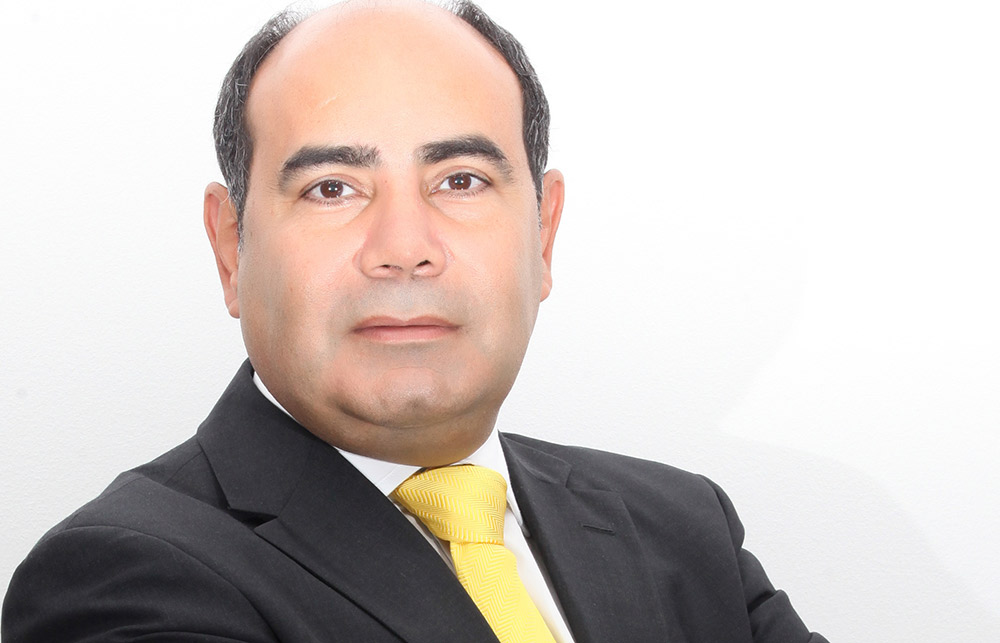As the use of air conditioning continues to rise in the region, the power demand also increases astronomically. At this point sustainable solutions are not only a wise choice, but imperative. District cooling might be gaining popularity at this point, but CEO of DC Pro Engineering, George Berbari, says it is not enough. He speaks with Lorraine Bangera about upgrading the system with tri-generation and using renewables as better source in order to save exhaustible fuels like oil and gas
George Berbari started his journey in 1995 with a natural gas fed district cooling scheme in Zayed Military City, Abu Dhabi. Having set up this one-of-a-kind system in the Middle East, he jokingly calls himself the “Godfather” of the district cooling industry.
District cooling is the centralised production and distribution of cooling energy, where chilled water is delivered via pipelines to office, industrial and residential buildings to cool the indoor air of the buildings within a district. According to Berbari, district cooling systems reduces power consumption by around 40% as compared to traditional and predominantly used air conditioning systems. Currently almost 20% of cooling is provided by district cooling and this is set to increase by 20 to 40% by 2030. That being said, Berbari states that district cooling faces the danger of stagnation as its technology is advancing at a much slower rate than other heating, ventilation and air conditioning (HVAC) applications. He says: “The district cooling industry uses a 10 year old technology with the only advancement coming from chiller manufacturers improving their efficiency.
The industry has recently responded to the customer complaints and reduced the district cooling fees to maximise profits and increasing number of customers. Berbari says: “There is nothing wrong with that, but I think district cooling needs to evolve into an industry that embraces the future and offers a serious solution to global warming at competitive rates that the customer can afford.”
He says that as the GCC in particular is showing a big increase in power, the industry needs to pick up the pace and come up with better solutions. Tri-generation or Combined Cooling, Heat & Power (CCHP), a process that is slowly gaining recognition in the industry, provides 45% electricity efficiency and 87% total efficiency. This will provide a 30% reduction in primary energy sources and much more if renewables are integrated. The solution, he says, is a synchronisation of district cooling tri-generation with renewable energy sources which can result in 75% savings in primary energy as compared to electric powered district cooling. “Already, district cooling systems offer a 40% saving on power consumption compared to air-cooled systems. The synchronisation can increase that.”
Tri-generation in district cooling synchronised with renewable energy has already captured the attention of intellectuals. He says that while tri-generation comprises of less than 2% of all district cooling plants, it is a growing trend with interest from governments to integrate renewables.
“The system curbs the exorbitant use of oil and gas for internal power generation, which has been increasing at around 7% annually,” he says.
Berbari states that the industry needs to be cautious. If it does not develop and include renewable energy such as solar or deep geothermal on one side, and conserve primary energy sources such as natural gas or petroleum on another, traditional district cooling systems may become obsolete.
“Currently the UAE has committed to have 7% of renewable energy by 2020. This is indeed a step in the right direction for tri-generation systems.”
A model example of a tri-generation system using renewables would be the district cooling plant that DC Pro Engineering designed for the Research Council Innovation Park in Oman. The project synchronises local produced power with 1 MW photovoltaic and with the national electric grid to save 75% of primary energy.
Berbari says that while tri-generation is an obvious solution, affordability is one of the key challenges, the traditional air cooling equipment that dominates the market place are quite inefficient but affordable, hence they are the systems of choice. “Which is why basic district cooling can still claim to be sustainable as people are using systems that are even more outdated.”
He says that the systems used are designed in the 1960s, with customers including some of the major international companies. “This is probably because we are not liable to anyone in the region, there is no regulation that has been passed to make things more sustainable yet.
“If we keep going at this rate we will end up losing 50% and eventually 100% of our gas and oil production internally.
“It is simple, half of the electricity produced in this region is done for air conditioning which increases to 70% of electricity produced during peak summer. District cooling, which is an outdated system, can help by reducing said production by 30%. But today we have a way through tri-generation and the use of renewables which can help reduce the consumption by 75%. It’s just a matter of time before the right choice is made.”

